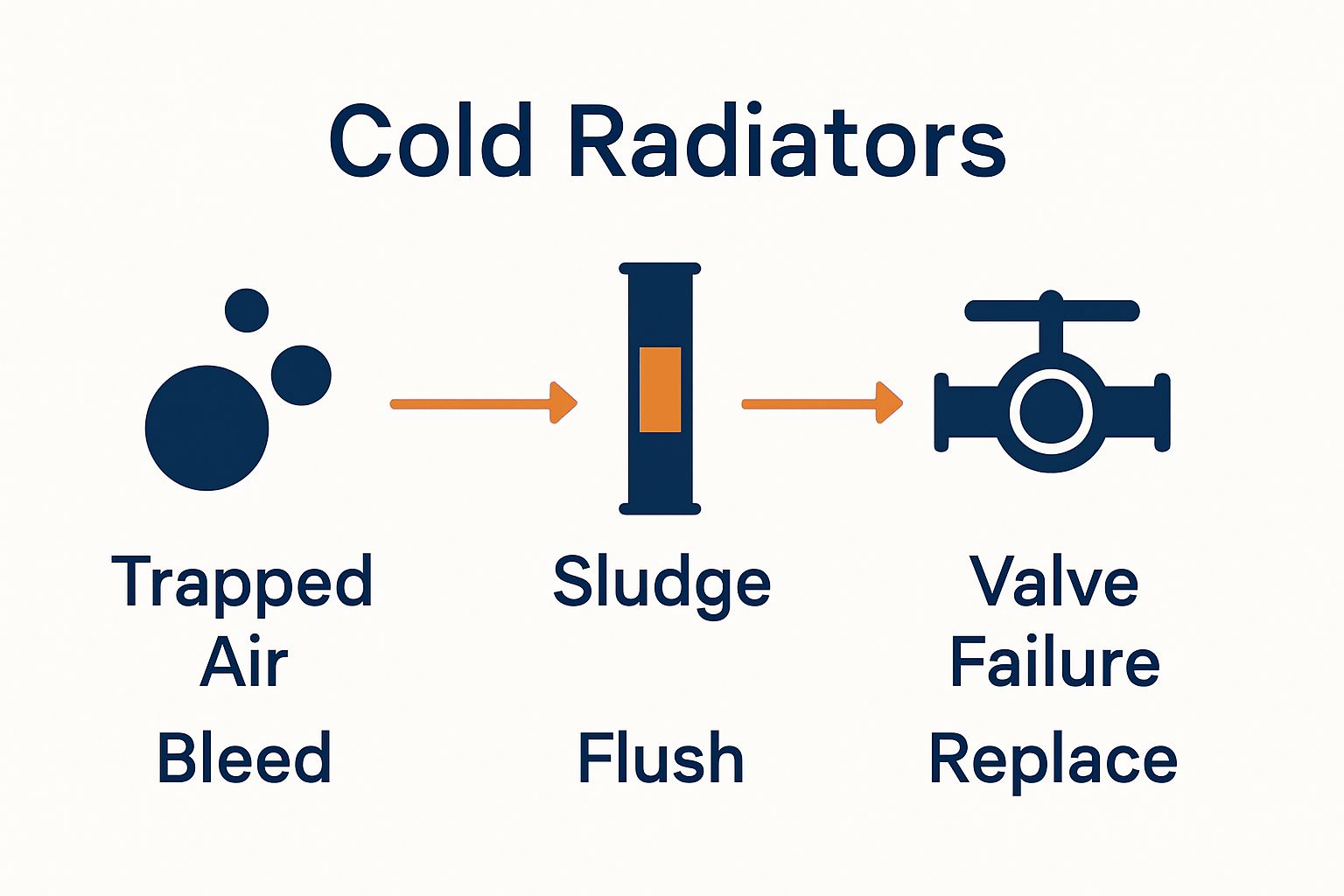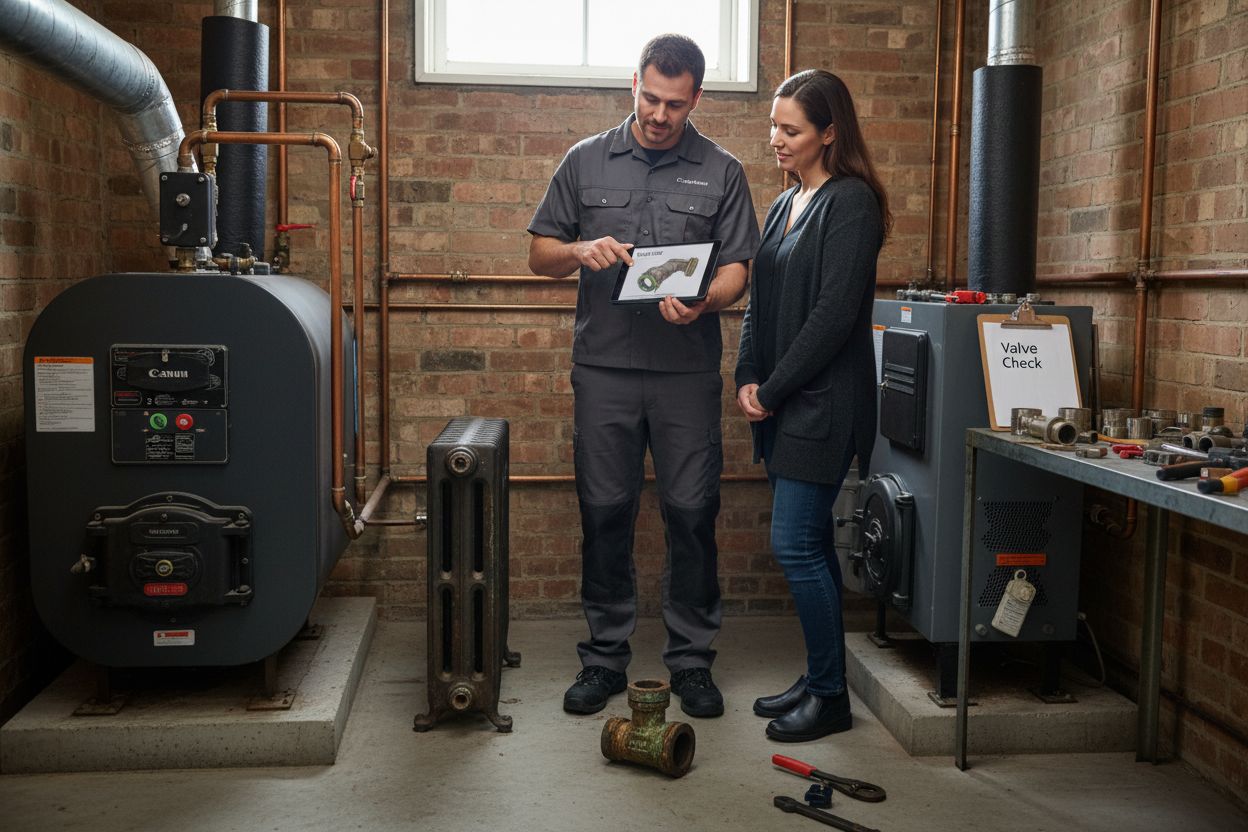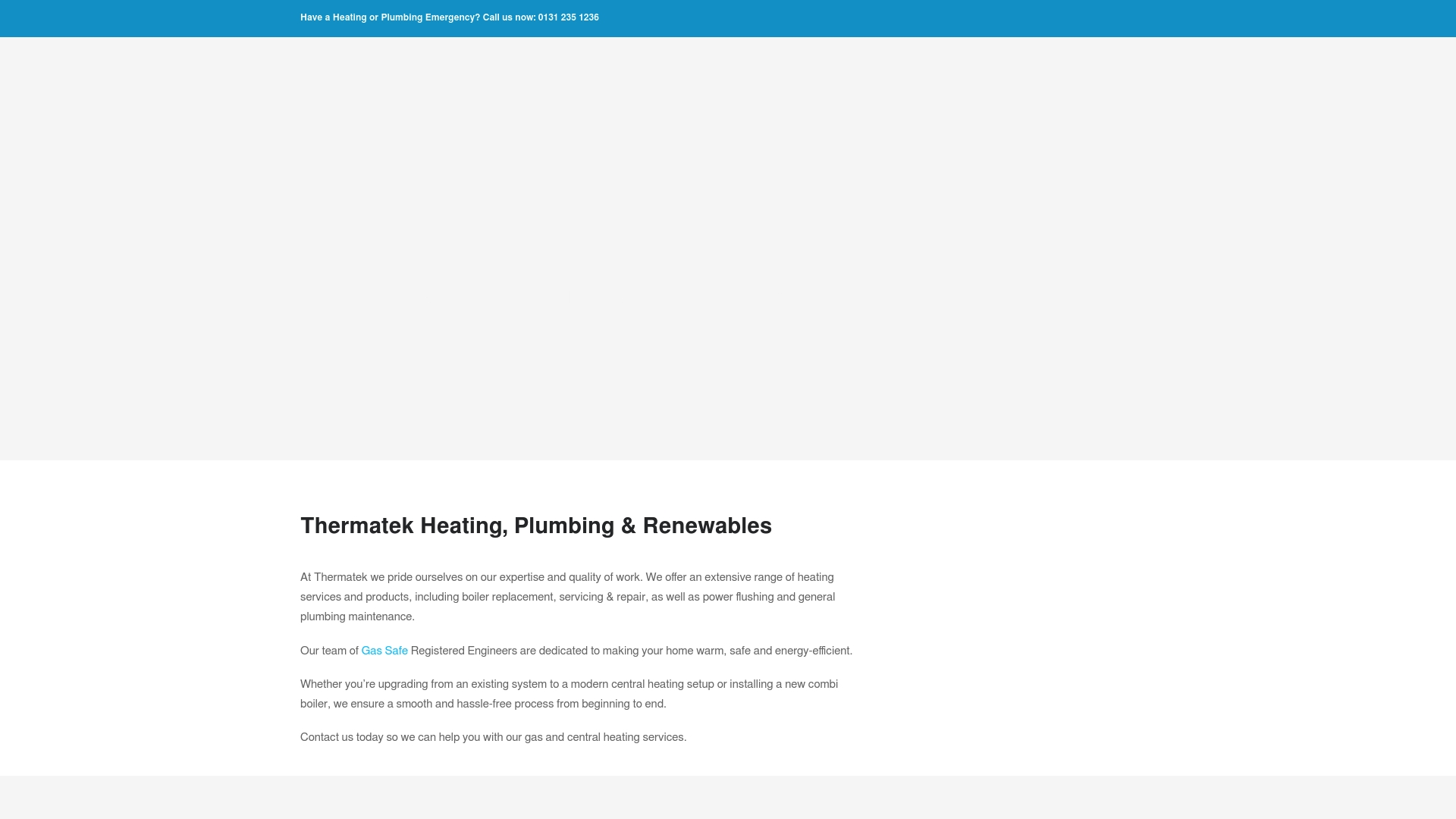Understanding Why Is My Radiator Cold: Key Insights
Radiators are the heart of most British homes in winter and almost every room relies on them to stay warm. But while you’d expect a modern system to run smoothly, almost 50 percent of all radiator problems are down to trapped air or hidden sludge. Most people think a cold radiator just needs a quick turn of the valve. The real culprit is usually a build-up deep inside your system that rarely gets noticed and could even double your heating bills if left unchecked.
Table of Contents
- The Basics Of Radiator Functionality
- Common Reasons For Cold Radiators
- The Importance Of Regular Maintenance
- Diagnosing Heating Issues In Different Properties
- Exploring Solutions And Improvements For Effective Heating
Quick Summary
| Takeaway | Explanation |
|---|---|
| Regular maintenance boosts heating efficiency | Routine checks can prevent costly repairs and ensure optimal operation of your heating system. |
| Air traps reduce radiator heating | Bleeding radiators to remove trapped air ensures proper hot water circulation and eliminates cold spots. |
| Sediment buildup harms radiator performance | Regular power flushing can remove sludge from the system, preventing overheating issues and uneven heat distribution. |
| Faulty valves cause heating inconsistencies | Inspecting and replacing malfunctioning radiator valves can improve temperature control and overall heating effectiveness. |
| Older properties need special attention | Architectural features in older homes often lead to unique heating challenges that require tailored solutions for optimal comfort. |
The Basics of Radiator Functionality
Understanding radiator functionality is crucial for maintaining an efficient home heating system. A radiator works as a heat exchanger, designed to transfer thermal energy from hot water into the surrounding room space, creating a comfortable indoor environment. Our comprehensive guide on hydronic heating systems provides additional insights into these intricate heating mechanisms.
Heat Transfer Mechanism
At its core, a radiator operates through a straightforward heat transfer process. Hot water circulated from the boiler flows through internal metal channels, warming the radiator’s metal surface. As the metal heats up, it radiates thermal energy into the surrounding air, effectively warming the room. According to research from the University of Kent, this heat transfer occurs through three primary mechanisms: conduction, convection, and radiation.
Key Components and Functionality
A typical radiator comprises several essential components that enable efficient heat distribution:
- Metal Body: Usually constructed from materials with high thermal conductivity like steel or aluminium
- Water Channels: Internal pathways allowing hot water to circulate and transfer heat
- Valves: Control the water flow and temperature within the radiator system
The efficiency of a radiator depends on multiple factors, including water temperature, surface area, and the thermal properties of its construction materials. When functioning correctly, radiators provide consistent and even heating throughout residential and commercial spaces.
This table outlines the key components of a typical radiator system and their roles in ensuring efficient heat distribution, as described in the article.
| Component | Description | Function in Radiator System |
|---|---|---|
| Metal Body | Steel or aluminium construction with high conductivity | Transfers heat from water to air |
| Water Channels | Internal pathways for hot water circulation | Move hot water from the boiler through the radiator |
| Valves | Mechanical or thermostatic controls | Regulate water flow and adjust temperature |
Common Reasons for Cold Radiators
When your radiator remains cold despite your heating system running, several underlying issues could be responsible. Understanding these potential problems helps homeowners diagnose and address heating system challenges effectively. Check out our comprehensive guide on radiator problems for more detailed troubleshooting insights.
Air and Blockage Complications
One primary reason for cold radiators is air trapped within the heating system. Air bubbles prevent hot water from circulating correctly, creating cold spots or entire radiators that fail to heat. According to British Gas research, trapped air can significantly reduce heating efficiency and increase energy consumption. Professional bleeding of radiators can help release these air pockets, restoring proper heat distribution.
Sludge and Sediment Accumulation
Over time, central heating systems accumulate magnetic and non-magnetic debris that can severely impact radiator performance. This sediment buildup, often referred to as “heating system sludge”, consists of:
- Rust particles from metal components
- Mineral deposits from water
- Corrosion byproducts
- Organic material breakdown
These contaminants gradually restrict water flow, creating uneven heating and potentially causing complete radiator failure. Regular system maintenance and power flushing can help prevent these issues and maintain optimal heating performance.

Valve and Pipework Malfunctions
Radiator valves play a crucial role in controlling water flow and temperature. Faulty thermostatic radiator valves (TRVs) or blocked pipework can prevent hot water from reaching specific radiators, resulting in cold surfaces. Mechanical failures, such as stuck valve pins or incorrect valve settings, can also contribute to heating inconsistencies. Professional inspection and potential valve replacement might be necessary to resolve these technical complications.
The following table compares the main causes of cold radiators described in the article, highlighting typical symptoms and recommended solutions for each issue.
| Cause | Typical Symptoms | Recommended Solution |
|---|---|---|
| Trapped Air | Cold spots, cool at top, uneven warmth | Bleed radiators to release air |
| Sludge & Sediment Build-up | Radiator feels cold or partially cold | Power flushing to remove debris |
| Faulty Valves | Radiator does not heat or is stuck cold | Inspect and replace valves as needed |
| Blocked Pipework | Radiator remains cold despite open valves | Clear blockages, professional system cleaning |
| Incorrect Valve Settings | Temperature inconsistencies, lack of control | Adjust or reset thermostatic settings |

The Importance of Regular Maintenance
Maintaining your heating system is not merely a recommended practice but a critical aspect of ensuring long-term performance, efficiency, and safety. Learn more about our heating system maintenance services to understand comprehensive care strategies for your home heating infrastructure.
Preventative Care and System Longevity
Regular maintenance serves as a proactive approach to identifying potential issues before they escalate into costly repairs. According to Health and Safety Executive guidelines, systematic inspection and servicing can significantly reduce the risk of unexpected breakdowns and extend the operational lifespan of heating equipment. Routine checks help prevent minor problems from developing into major systemic failures.
Economic and Performance Benefits
Consistent maintenance offers multiple economic advantages for homeowners. A well-maintained heating system operates with enhanced efficiency, directly translating to reduced energy consumption and lower utility bills. The potential benefits include:
- Reduced energy wastage
- Lower monthly heating expenses
- Extended equipment lifespan
- Improved overall system performance
- Minimised risk of unexpected repair costs
Safety and Compliance Considerations
Beyond performance, regular maintenance plays a crucial role in ensuring household safety. Heating systems that are not properly serviced can develop dangerous faults, potentially leading to gas leaks, carbon monoxide risks, or electrical malfunctions. Professional maintenance involves comprehensive checks that go beyond surface-level inspections, including detailed assessments of electrical connections, gas pressure, combustion efficiency, and potential corrosion or wear in critical system components.
Diagnosing Heating Issues in Different Properties
Heating challenges can vary significantly depending on a property’s architectural design, age, and construction. Explore our guide to efficient heating solutions to understand the nuanced approaches required for different property types.
Property Age and Construction Variations
Older properties often present unique heating challenges compared to modern builds. According to research from the University of Kent, the structural characteristics of a building significantly impact heat distribution and radiator performance. Older homes with solid walls, limited insulation, and original pipework are more prone to heat loss and uneven temperature regulation. Victorian and Edwardian properties, in particular, may require specialised heating strategies to overcome inherent thermal inefficiencies.
Multi-Storey and Open-Plan Configurations
The layout of a property plays a crucial role in heating performance. Different property configurations present distinct challenges:
- Tall, multi-storey buildings experience heat stratification
- Open-plan spaces require more complex heating solutions
- Properties with high ceilings demand different heating approaches
- Converted spaces like lofts or extensions may have unique thermal characteristics
Insulation and Structural Considerations
Insulation quality dramatically influences a property’s heating efficiency. Poorly insulated spaces create significant thermal bridges, leading to cold spots and increased energy consumption. Modern properties typically feature better insulation standards, including double-glazed windows, cavity wall insulation, and improved roof treatments. Homeowners in older properties might need to invest in supplementary insulation solutions to address inherent heating challenges and improve overall system performance.
Exploring Solutions and Improvements for Effective Heating
Addressing cold radiators requires a strategic approach that combines diagnostic techniques, targeted interventions, and potential system upgrades. Discover our comprehensive energy efficient heating solutions to transform your home’s thermal performance.
Professional Diagnostic Techniques
Professional heating engineers employ sophisticated diagnostic methods to identify and resolve radiator performance issues. According to research from energy efficiency experts, comprehensive system assessments involve thermal imaging, pressure testing, and detailed visual inspections. Advanced diagnostic tools enable precise identification of blockages, air pockets, and potential mechanical failures that might prevent optimal heat distribution.
Targeted Intervention Strategies
Heating system improvements can be categorised into immediate and long-term solutions:
- Power flushing to remove accumulated system debris
- Bleeding radiators to eliminate trapped air
- Replacing faulty thermostatic valves
- Upgrading to modern, more efficient radiator designs
- Installing smart thermostatic controls
System-Wide Performance Enhancements
Beyond individual radiator repairs, homeowners can significantly improve overall heating efficiency through holistic system upgrades. This might involve reassessing the entire central heating infrastructure, including boiler performance, pipe insulation, and thermal transfer mechanisms. Upgrading to modern condensing boilers, installing intelligent zoning systems, and implementing comprehensive insulation strategies can dramatically reduce energy consumption while ensuring consistent, comfortable heating throughout the property.
Restore Consistent Warmth with Trusted Local Experts
Are you tired of facing cold radiators, unpredictable heat, or unexplained chilly spots in your home? This article has shown how issues like air blockage, sludge, faulty valves and insulation gaps can leave you uncomfortable and frustrated. When heating systems underperform, it can impact your comfort, raise your energy bills and increase stress about home safety. You deserve a reliable, energy-efficient solution from experienced professionals who truly understand the intricacies of modern heating.

Choose Thermatek Heating for expert care across Edinburgh and Midlothian. Our Gas Safe Registered engineers will thoroughly diagnose problems, whether you need routine maintenance, a power flush to clear sludge, or help with smart controls and system upgrades. Do not let unresolved radiator issues disrupt your peace of mind any longer. Visit Thermatek Heating today to request your free quote or speak with our team. Take action now to enjoy a warm and efficient home all year round.
Frequently Asked Questions
Why is my radiator cold when the heating is on?
A cold radiator could indicate trapped air or blockage in the system, preventing hot water from circulating effectively. Professional bleeding or system cleaning may be necessary to resolve the issue.
How can I tell if there is air in my radiator?
You may notice cold spots on the radiator or an uneven temperature. If the radiator feels cool at the top but warm at the bottom, it likely contains trapped air that needs to be bled out.
What causes sludge build-up in my heating system?
Sludge accumulation, consisting of rust, mineral deposits, and organic material, can restrict water flow in radiators. This often occurs in older systems and can be prevented by regular maintenance and power flushing.
How do I maintain my radiator for optimal performance?
Regular maintenance such as bleeding, power flushing, and checking for valve malfunctions can significantly improve radiator performance. A consistent servicing schedule is also advisable to prolong system life and efficiency.

